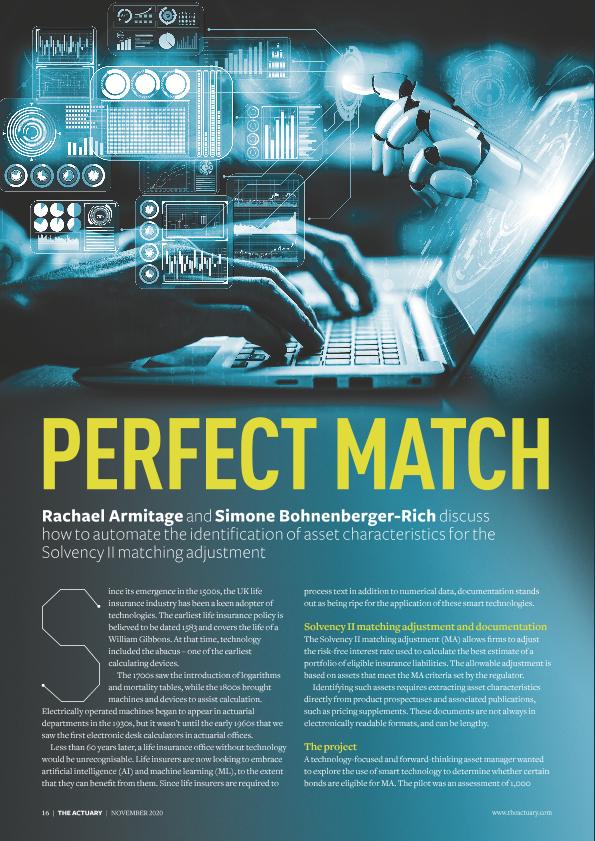Perfect Match

Contenido multimedia no disponible por derechos de autor o por acceso restringido. Contacte con la institución para más información.
| Tag | 1 | 2 | Valor |
|---|---|---|---|
| LDR | 00000cab a2200000 4500 | ||
| 001 | MAP20200036326 | ||
| 003 | MAP | ||
| 005 | 20220911190428.0 | ||
| 008 | 201117e20201102gbr|||p |0|||b|eng d | ||
| 040 | $aMAP$bspa$dMAP | ||
| 084 | $a6 | ||
| 100 | $0MAPA20200022374$aArmitage, Rachael | ||
| 245 | 1 | 0 | $aPerfect Match$cRachael Armitage, Simone Bohnenberger-Rich |
| 520 | $aSince its emergence in the 1500s, the UK life insurance industry has been a keen adopter of technologies. The earliest life insurance policy is believed to be dated 1583 and covers the life of a William Gibbons. At that time, technology included the abacus one of the earliest calculating devices. The 1700s saw the introduction of logarithms and mortality tables, while the 1800s brought machines and devices to assist calculation. Electrically operated machines began to appear in actuarial departments in the 1930s, but it wasn't until the early 1960s that we saw the first electronic desk calculators in actuarial offices. Less than 60 years later, a life insurance office without technology would be unrecognisable. Life insurers are now looking to embrace artificial intelligence (AI) and machine learning (ML), to the extent that they can benefit from them. Since life insurers are required to process text in addition to numerical data, documentation stands out as being ripe for the application of these smart technologies. | ||
| 650 | 4 | $0MAPA20080579258$aCálculo actuarial | |
| 650 | 4 | $0MAPA20080611200$aInteligencia artificial | |
| 650 | 4 | $0MAPA20080568009$aAutomatización | |
| 650 | 4 | $0MAPA20080586294$aMercado de seguros | |
| 650 | 4 | $0MAPA20080570590$aSeguro de vida | |
| 700 | 1 | $0MAPA20200022473$aBohnenberger-Rich, Simone | |
| 773 | 0 | $wMAP20200013259$tThe Actuary : the magazine of the Institute & Faculty of Actuaries$dLondon : Redactive Publishing, 2019-$g02/11/2020 Número 10 - noviembre 2020 , p. 16-17 |

